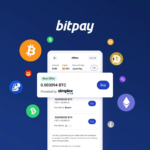In this article, we will discuss one thing: what does block chain technology really want? Blockchain came about as a support system for Bitcoin but it has since grown into something much more complex and far-reaching throughout many industries.
- What Is Blockchain?
- Blockchain Security
- Greater Transparency
- Instant Traceability
- Increased efficiency and speed
- How Do Different Industries Use Blockchain?
- How Is Blockchain Different From The Cloud?
- What is Blockchain As a Service?
- What Are the Benefits Blockchain?
- How Did Blockchain Technology Evolve?
- First Generation – Bitcoin and Other Virtual Currencies
- Second Generation – Smart Contracts
- Third Generation – The Future
- In The End
Basically, the main aim of the blockchain is to provide an open source record system that cannot be changed which maintains trust between all parties taking part in any digital transaction on any network anywhere.
Blockchain changes where data is stored, how it is verified and shared by doing away with middlemen and introducing distributed consensus mechanisms.
These new ways could make work easier while cutting down on costs so this type of technology should not be ignored especially when applied across various sectors like finance, supply chain management or even health care among others where accountability matters most.
What Is Blockchain?
Blockchain is one of the distributed ledger technologies which allows transactions to be recorded on a network of computers that is transparent and secure. It is composed of blocks, each block containing a batch of timestamped transactions. The cryptographic links between those blocks are responsible for forming an unbroken chain.
A significant characteristic about blockchain is its being decentralized; this means that instead of having one central authority maintaining it, there are many nodes in charge of keeping the ledger. Such an architecture guarantees that no single organization controls all parts of the system thereby making it more secure against attack or manipulation by any one entity.
Blockchain Security
A downside of digital revolution is that it has provided an opportunity for personal data theft to increase. Government databases are often hacked into by cybercriminals. These attacks usually lead to the exposure of millions of Americans’ names, social security numbers, birth dates, addresses and driver’s license details as happened in Equifax database breach 2017 among others.
Single-point-of-failure risk is reduced thus network security is hardened through blockchain data structures as stated by Booz Allen Hamilton thereby making it difficult for someone to hack a database.
Blockchain methods towards securing information are being researched by The Department of Homeland Security such as managing internet access and online identity. If hash values citizen documents were stored on the blockchain then governments can supply these documents whenever need be in electronic form which can be verified according to McKinsey’s report on this technology.
Greater Transparency
To do this, every establishment must uphold an individual database. It takes a distributed ledger approach where it records transactions and data in the same way across many places.
When it comes to network members with allowable access, they view alike information concurrently hence offering complete visibility. All transactions are recorded immutably and stamped with time and date which allows people to see through any deceitful acts as it lets them look at all that went down during a transaction’s lifetime.
Instant Traceability
Each move that an asset makes is documented by blockchain, which establishes a history of the item’s origin. If people are worried about these problems in places like companies associated with environmental protection or labor rights for their products —or if there’s widespread counterfeiting within an industry— it solves them all.
Data on where a product comes from can be shared straight to consumers through this technology. This information also has the capability of revealing any weak points in a supply chain i.e., where items may be sitting idly on docks waiting for transportation.
Increased efficiency and speed
When traditional processes that use a lot of paper are followed, it tends to be time-consuming, prone to human error, and frequently requires the involvement of third parties. If these procedures are simplified using blockchain, they can allow for faster and more efficient completion of transactions.
In addition to transaction details, records can be kept on the blockchain which means there is no need for document exchange. Clearing and settlement can happen much quicker because there is no need for reconciling different ledgers.
How Do Different Industries Use Blockchain?
Blockchain is a new technology that has been taken up by different sectors in unique ways. We present some use cases in various industries below:
Energy: Energy firms employ blockchain to create peer-to-peer energy trading platforms and simplify access to renewable energy. For instance:
Companies dealing with the production of electricity from solar energy have established blockchain-based systems through which individuals can trade this power among themselves.
In this setup, homeowners having solar panels use the platform to sell their extra electricity units to neighbours who need them most. The whole process is almost automatic whereby smart meters generate transactions recorded by the distributed ledger technology.
Through blockchain-based crowd funding initiatives, people can sponsor and own solar panels in communities without access to electricity grid. Once these panels are installed sponsors may also earn rent from such areas.
Finance: Traditional financial systems such as banks, stock exchanges etcetera are utilizing blockchain services for managing online payments, accounts as well as market trading among other functions. Singapore Exchange Limited is one such company
It is an investment holding firm providing financial trading services across Asia. They employ blockchain technology to create a more efficient interbank payment account system which helped them solve several issues like batch processing and manual reconciliation of thousands of financial transactions.
Media & Entertainment: In media and entertainment industry copyright data management is done using blockchain systems. Copyright verification ensures artists get paid fairly for their work hence every sale or transfer involving copyright content needs to be registered through multiple transactions.
Sony Music Entertainment Japan for example uses distributed ledger technologies (DLT) in order make digital rights management (DRM) more efficient than before thereby improving productivity while at the same time reducing cost associated with copyright processing thanks to successful implementation of block chain strategy.
Retail: The movement of goods between suppliers and buyers can be tracked by retail companies through blockchains. Amazon retail filed a patent for distributed ledger technology (DLT) system designed specifically for verifying authenticity on all products sold via its e-commerce platform using block chain technology. This will enable Amazon sellers map out their global supply chains by allowing manufacturers, couriers, distributors, end users and secondary users to append events onto the shared ledger after registering with certificate authority.
How Is Blockchain Different From The Cloud?
The word cloud is used to describe computing services that can be accessed over the internet. The cloud comprises Software as a Service (SaaS), Product as a Service (PaaS) and Infrastructure as a Service (IaaS). They take care of their hardware and infrastructure while allowing you to connect to these computers through the web.
Besides, they offer more resources than database management alone.In case you decide to participate in a public blockchain network, you will need your hardware resources for storing the ledger copy. Alternatively, you may choose to use a server from the cloud for this purpose too. From the same clouds come complete Blockchain as a Service (BaaS).
What is Blockchain As a Service?
Using Blockchain as a Service (BaaS) can be compared to leasing a fully furnished kitchen rather than constructing one from the beginning. BaaS allows you to create blockchain apps and services in the cloud using all necessary tools and infrastructure provided by a third-party vendor.
You do not need to think about setting up servers or configuring intricate systems; instead, it is possible to concentrate on modifying the present blockchain technology according to your requirements. Hence, this speeds up and makes adopting blockchain more efficient because no time is wasted for preparations.
What Are the Benefits Blockchain?
- The moment a transaction is recorded, it becomes unchangeable; this is why it is called an open digital population sign.
- Block chain technology always ensures security due to its encryption feature.
- As the record book updates itself, transactions happen immediately and visibly.
- Since it is not controlled by one organization or person, there are no fees charged in-between transactions.
- Participants must confirm the identity of any transaction.
How Did Blockchain Technology Evolve?
The roots of blockchain technology can be traced back to the 1970s with Ralph Merkle’s patent on Hash trees or Merkle trees, a data structure for storing information by linking blocks using cryptographic hashes. In the 1990s, Stuart Haber and W.
Scott Stornetta used Merkle trees to create a system that secured document timestamps against tampering, marking the first known application of blockchain in history. Over time, this three-stage development has seen various advancements:
First Generation – Bitcoin and Other Virtual Currencies
Back in 2008, someone (or someones) using the name Satoshi Nakamoto described blockchain technology as it’s understood today. In this version of blockchain — the one used by bitcoin — each block of information could contain only 1 megabyte of data about bitcoin transactions. Many of the things we expect from blockchains now were absent.
Second Generation – Smart Contracts
A few years later, after cryptocurrency’s first wave had settled down, developers started testing out possible uses for blockchains that went beyond simple digital currencies. For example, the creators of Ethereum used blockchain to facilitate software-driven transfer agreements between assets. They introduced a feature that let people write code directly into blockchain that would execute when all parties had fulfilled their requirements.
Third Generation – The Future
As more companies experiment with public blockchains, and as more government officials warm up to cryptocurrencies themselves, there are still limitations on what can be done at scale effectively. But researchers are working on ways to shore up those weaknesses and others that have become apparent in recent years, and it looks like they’ll find solutions in time to keep the revolution going.
In The End
To conclude, blockchain technology aims to change the way we keep, prove, and share information in a digital age. It can allow trust and frictionless transactions by creating a distributed transparent secure ledger system for any field.
Blockchain seeks to foster trust and enable frictionless transactions across various industries by offering decentralized, transparent, and safe ledger systems. The main objective of this technology is still the same no matter if it is used for improving financial services; streamlining supply chains; enhancing healthcare systems or even transforming governments
That is empowering people & organizations with faster more reliable ways of doing business while keeping records too.As new uses are discovered for blockchains over time its potential to transform whole sectors & drive positive changes within societies will continue being both promising & exciting.








